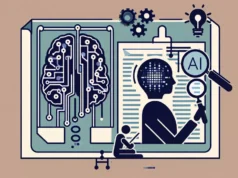In an era where information is abundant and digital platforms are rife with both news and noise, the battle against misinformation has become a crucial front for journalists. This article delves into the various technologies and methodologies employed in the journalism industry to combat the spread of false news, highlighting both the challenges and the innovative solutions being developed.
The Rising Tide of Misinformation in the Digital Age
Misinformation has always been a concern in journalism, but the digital age has amplified its spread and impact. Social media platforms, with their vast reach and rapid sharing capabilities, have become fertile grounds for the dissemination of false news. This environment poses unique challenges for journalists who are committed to truth and accuracy.
Technological Aids in Detecting False Information
Advancements in technology have led to the development of tools that can assist journalists in identifying and debunking misinformation. AI and machine learning algorithms are increasingly being used to scan massive amounts of data for patterns indicative of false news. Fact-checking software tools are also becoming more sophisticated, allowing journalists to quickly verify claims and sources.
The Role of Collaborative Networks and Databases
Collaborative efforts have emerged as a powerful strategy against misinformation. Networks like the International Fact-Checking Network (IFCN) provide platforms for fact-checkers worldwide to share resources and information. Databases that track and archive false stories also prove invaluable, offering journalists a reference to identify recurring misinformation trends.
Methodologies for Effective Reporting in the Misinformation Era
Journalists are adapting their methodologies to address the challenges posed by misinformation. This includes thorough source verification, contextual reporting, and transparent communication with the audience about the journalistic process. Emphasizing media literacy and critical thinking in reporting helps audiences discern credible information from falsehoods.
Ethical Considerations and Responsibility
Ethical considerations are paramount in the fight against misinformation. Journalists must balance the urgency to inform with the responsibility to avoid amplifying false narratives. Upholding ethical standards like accuracy, fairness, and impartiality is essential in maintaining public trust and credibility.
Conclusion: A Collective Endeavor for Truth
Combating misinformation is not solely the responsibility of journalists; it requires a collective effort involving technology developers, policy makers, educators, and the public. However, journalists are uniquely positioned to lead this fight, armed with the right tools, strategies, and an unwavering commitment to the truth. As misinformation continues to evolve, so must the methodologies and technologies employed by journalists to ensure that accurate and reliable information prevails in the digital landscape.






